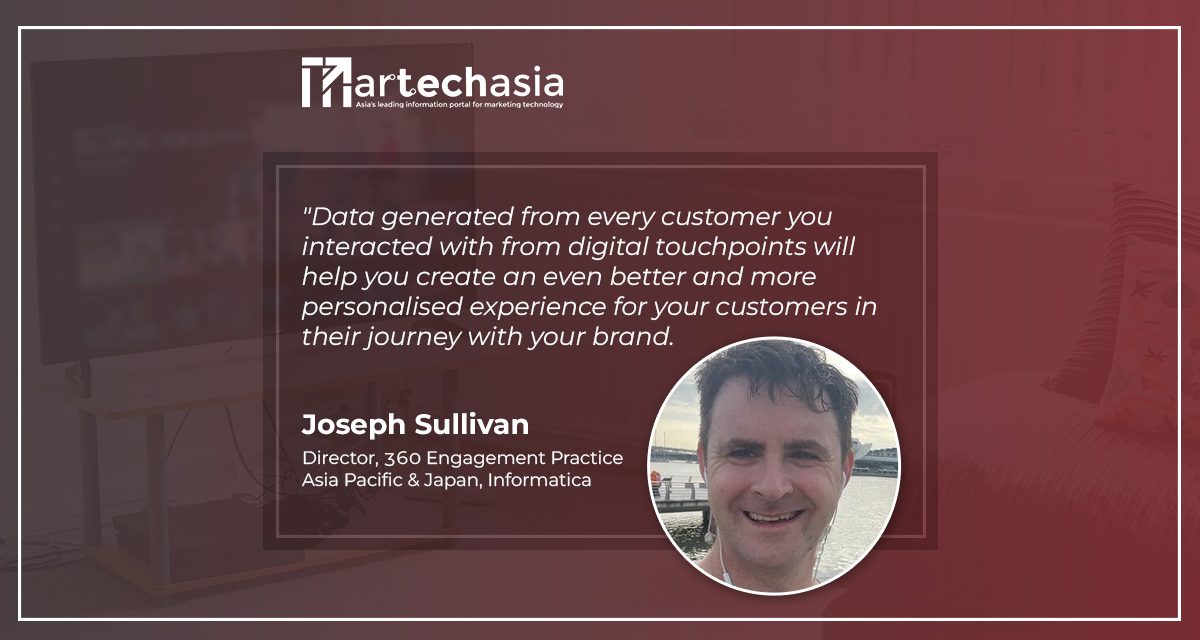Here are the five golden rules you should consider following to run an effective data-driven marketing campaign.
Ever since the pandemic hit the region last year, lockdowns and safe distancing measures have forced brick-and-mortar businesses to go digital and others to accelerate their digital transformation. Today many countries across Asia are still grappling with the resurgence of Covid-19 cases and businesses are turning to online to keep their operation running.
In fact, digitalisation and the growth of digital economy in Asia is expected to continue even after the pandemic. This is an opportune time for marketers to harness data that is exponentially growing with digitalisation. Data generated from every customer you interacted with from digital touchpoints will help you create an even better and more personalised experience for your customers in their journey with your brand while also protecting and safeguarding customer data with good data governance.
Here I am going to share the five golden rules you should consider following to run an effective data-driven marketing campaign.
1. Free Your Data and the Rest will Follow
With accelerated digitalisation, companies are inundated by the exponential growth of data and find it hard to keep up with the surge. For companies which have traditionally been running their business offline, many data silos have been created in the organisation as data resides in disparate systems, software and applications. This slows down business operations, hampers cross-functional collaboration, and affects work productivity. Even the consistency, completeness, and quality of the data across these silos can hinder business insights and decision-making.
From purchase history, inventory management, and marketing campaigns, data is locked up in silos and will continue to grow disjointedly in volumes if your company does not find ways to integrate and cleanse data efficiently and effectively. It is therefore important for companies to consider integrating their marketing automation system with other business applications to allow customer data to be freed up for marketers to make faster and smarter decisions that contribute directly to better ROI.
Cloud-native solutions today are based on application programming interfaces (APIs) to allow companies to simplify application development, integrate new application components into an existing architecture, and even clean and integrate all your customer data. Such flexible and scalable technology solutions allow your company to respond quickly to market changes such as shifting to digital markets.
2. Normalise Your Data and Enrich It
In today’s digital economy, customers expect every interaction they have with a business to be contextual, relevant and personalised. How then can you make sure you are able to deliver a positive customer experience and keep your customers happy?
When prospect or customer data is captured from different touchpoints, it ends up duplicated across many fragmented systems. As such, data that is stored in one system will have limited value to other systems that are siloed from each other. What’s worst, when there is inaccurate data or data that isn’t in a standardised format, its value is weakened further. This is why raw data needs to be cleansed and standardised, and then enriched to better understand customer buying behaviours, preferences and interests. This way you can foster a better relationship with customers through more engaging and rewarding experiences.
An intelligent data management solution can discover, cleanse, standardise, deduplicate, and enrich data to ensure only high-quality and trusted data is used across customer facing roles such as sales, service and marketing. As a marketer, you can run more effective campaigns based on complete and accurate data to meet your campaign objectives and deliver personalized experience needed to turn opportunity into sales.
3. Master Your Data and Scale for Success
Although businesses might use a CRM to maintain their customer database, they often find themselves struggling to get a single, quick and real-time view of their customer across multiple applications – from CRM, marketing automation, accounting to shipping systems.
What’s more, the recent growth in popularity of account-based marketing (ABM) further intensifies the need to ensure new leads captured from multiple channels are accurately linked to the accounts that have been targeted for lead nurturing, otherwise they will become orphaned opportunities.
Today’s marketers are aware of the issues on data fragmentation, but there is far less understanding of how to effectively address them. As marketers, you need to own a piece of data conversation in your company’s data strategy. Consider looking into the possibility of implementing master data management that can centrally manage customer data across your organisation in real-time to keep data accurate, of high quality and current to achieve greater business outcomes while also establishing a data governance framework to protect customer data.
4. Automate Data-Related Activities to Improve Productivity
As marketers you may often be inundated by labour-intensive data-related tasks and faced with manual work that requires you to process the same data repeatedly. Such a process is time consuming and often results in human errors that in turn affect customer satisfaction and sales.
One way to address these inefficiencies is to consider adopting technologies that provide an easy-to-use integrated workflow system for automating how you organise and manage your data on an ongoing basis. These technologies allow marketers to follow a simple visual configuration process, eliminate repetitive tasks, streamline processing and reduce errors.
By automating routine tasks such as importing new lead records, transforming different data formats to match your CRM or your master data management systems, or activating marketing campaigns and sending campaign results for analysis, you eliminate data inconsistencies and speed up your processes, thus gaining productivity in the process.
5. Organise Your Data in a Hub
To maximise the outcomes from your marketing data, it is also critical that your company allows consistent access to the same fresh, curated data from all systems for users across the organisation. Data will only be recognised as a valuable asset if it is made available to users in the organisation to perform their job effectively.
By unifying and allowing data, including customer data, orders, billing, and analytics reports, to flow through a central hub, you can be certain that you are getting the most current, accurate data and results you need for the business. Furthermore, with connected data in a hub, efficiency can be achieved where high speed, high throughput and high-performance data can be gathered to meet the ever-evolving needs of the business environment.
To this end marketers that put the customer at the centre of everything and value data as an important asset should start partnering with your Chief Information Officer (CIO) and Chief Data Officer (CDO). Discuss with them how data-driven can be efficiently used in your function and work toward putting the necessary steps in place to help you run an effective data-led marketing campaign.



















